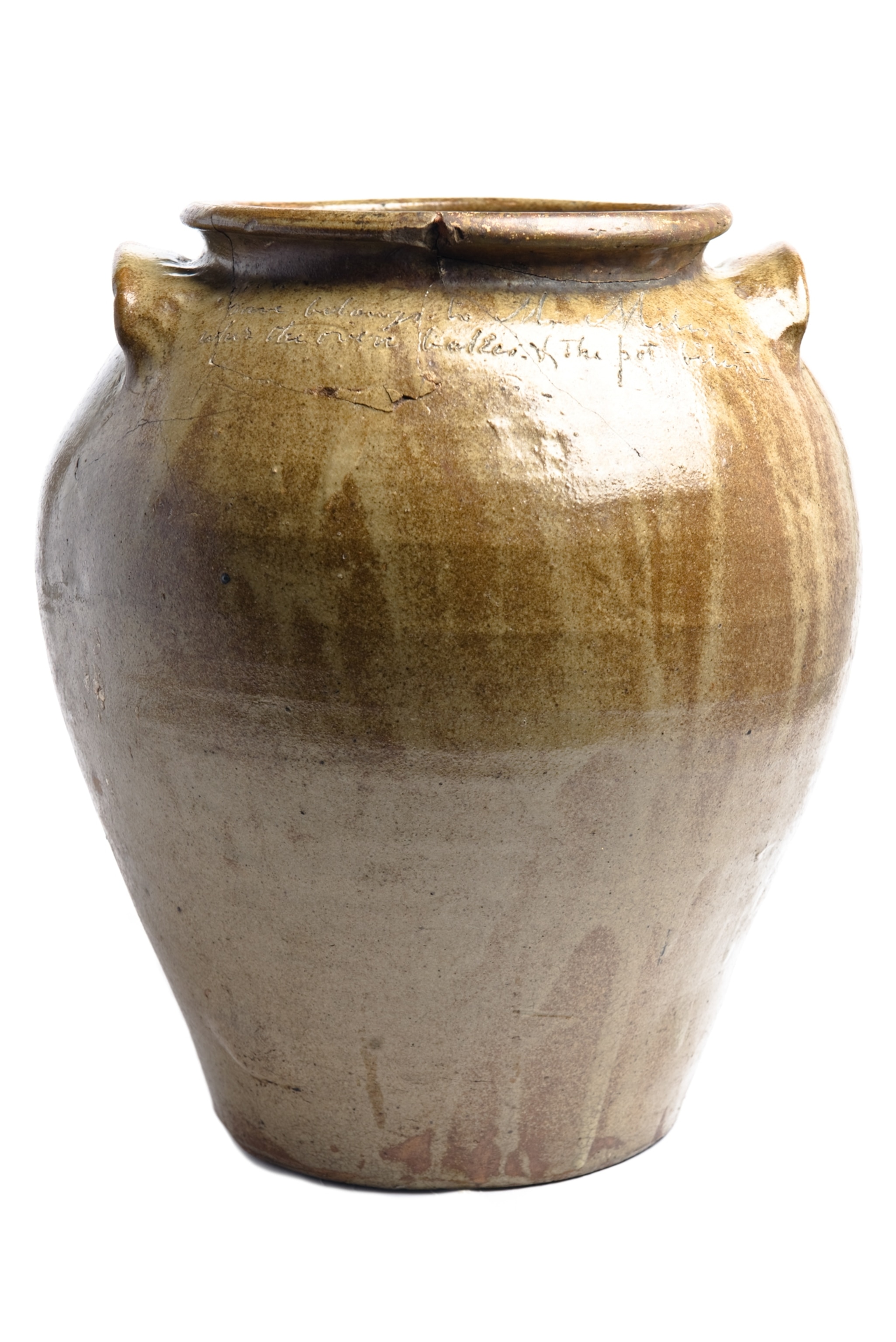Niessen notes that the safety measures are constantly changing, that there is “never a status quo” but can shift to react to all probable threats. Given the pregnable location of the museum, staff need to be continually watching, monitoring future threats and adapting as weather patterns and sea levels change.
Resilient architecture and institutional planning keep rare American pottery safe
Often, damage comes in a more dramatic form: hurricanes. According to a 2024 study from nonpartisan nonprofit Climate Central, the severity of hurricanes has been significantly “boosted” by ocean warming. Fortunately, the Charleston Museum in South Carolina protects their collection of significant works by enslaved potter David Drake behind what Curator of History Chad Stewart describes as “big, brown, and brick” Brutalist-style building.
Built in the 1980s, Stewart says, “aesthetically, our building does not get great views from the public.” He recalls a time when a curator came over from the Victoria and Albert Museum in London and said upon exiting the car, “My, what a lovely prison you have.” Yet the structure has performed well in major weather events like Hurricane Hugo which hit Charleston as a Category Four in 1989. For a major storm, like Hugo, Stewart says it’s museum policy to “mobilize our curatorial staff from all departments and box up the contents” of their nearby, affiliated historic houses, moving their extended collection to the relative safety of the main museum.

The Charleston Museum houses the largest public collection of David Drake pottery. Drake was an enslaved artisan who frequently inscribed his work with original verse. On this pot, dated July 31, 1840, he referenced his own enslavement: “Dave belongs to Mr. Miles, wher the oven bakes and the pot biles.” Photograph Courtesy The Charleston Museum
The museum’s significant collection of Drake pottery stays safe behind the solid brick-and-steel facade. The Charleston Museum owns the largest collection of Drake’s work in public hands, and these stoneware pots and jars are considered a highlight of the notable collection. “What makes the Drake pottery so valuable culturally is his story,” says Stewart. Drake learned his trade as an enslaved person, and although literacy among slaves was legally forbidden at the time, he learned to read and write. Stewart argues that the Drake’s “agency” and “expression” combined to create works of remarkable importance. Many of Drake’s elegant, hand-thrown jars and jugs are decorated with lines of verse written by their maker. “Dave belongs to Mr. Miles, where the oven bakes and the pot biles,” reads one jar, dated July 31, 1840. “It stands out to me because referencing his own enslavement was a rare and powerful thing,” Stewart says.
“Our building was designed with hurricanes in mind,” Stewart adds. “Our David Drake pottery is stored in an area that is as protected as we can make it.”
Conservators at a historic Miami mansion work to protect it from rising sea levels
Rising sea levels are a concern at Vizcaya Museum and Gardens in Miami, Florida. A National Historic Landmark, the 1916 mansion sits directly at sea level, a mere 100 feet from Biscayne Bay, which is especially vulnerable to rising sea levels. “We’re experiencing difficulties with storms, rainfall, pests, and of course, climate management,” says Vizcaya’s lead conservator Davina Kuh Jakobi. Not only do they have to contend with termites and shipworms, but they’re also slowly watching as the ocean creeps closer to the Renaissance-inspired garden and grounds.





